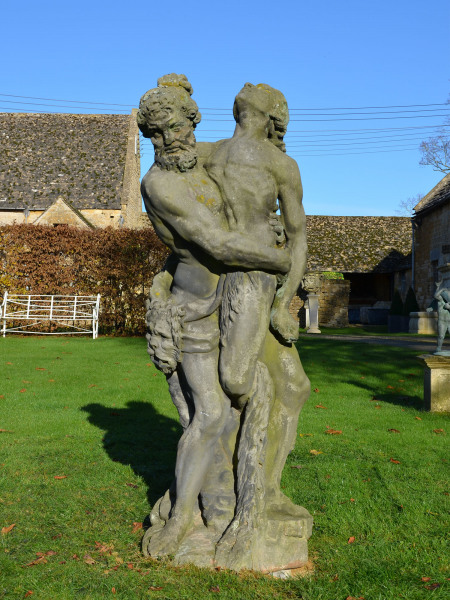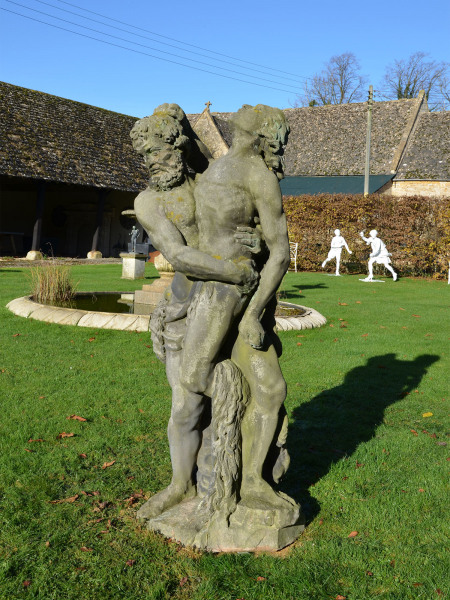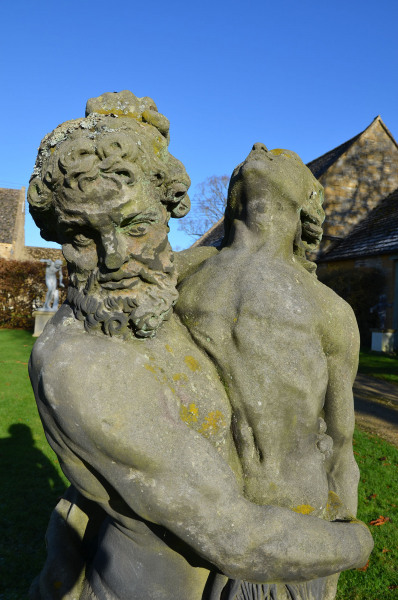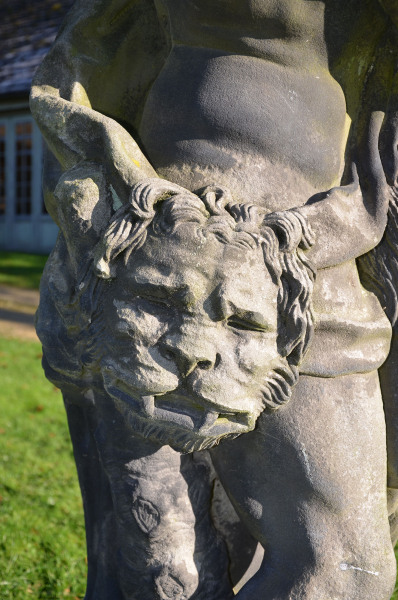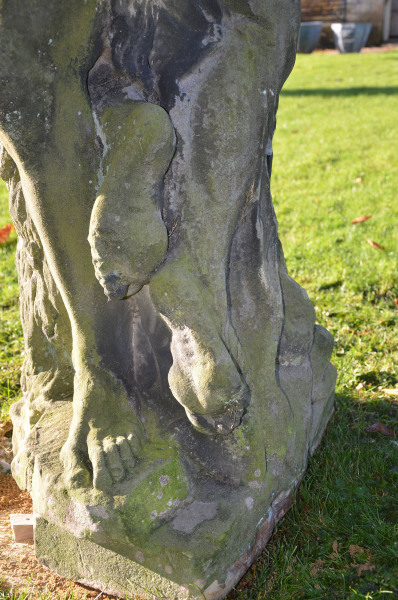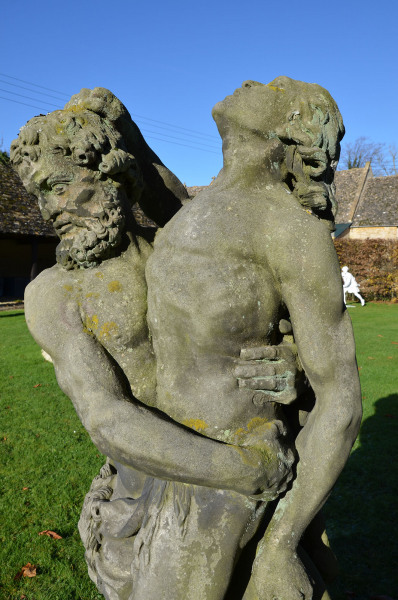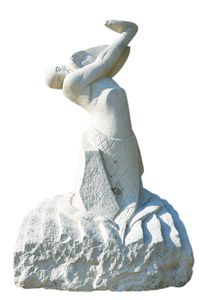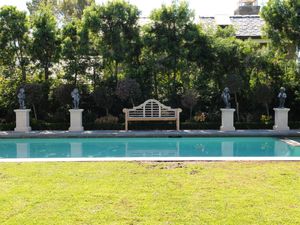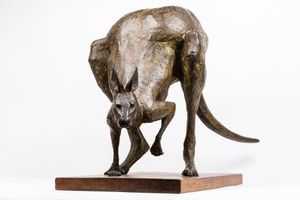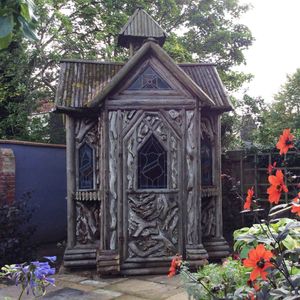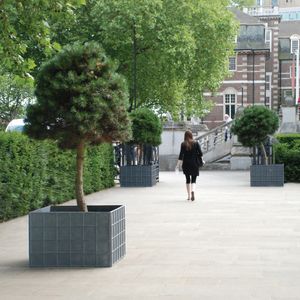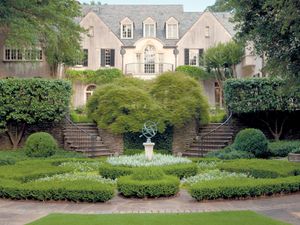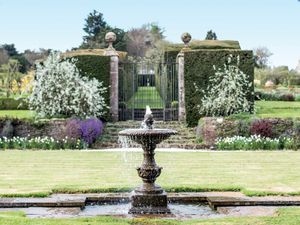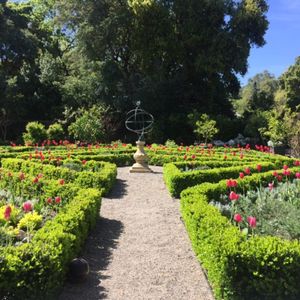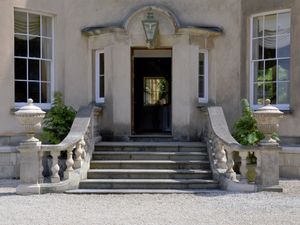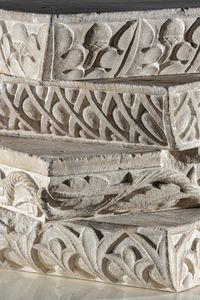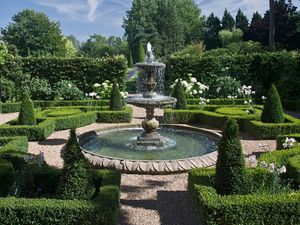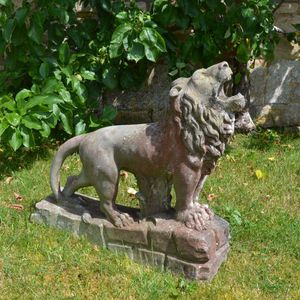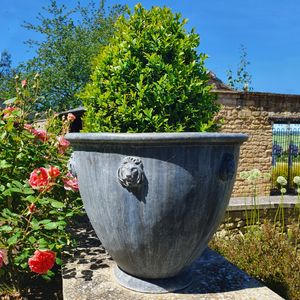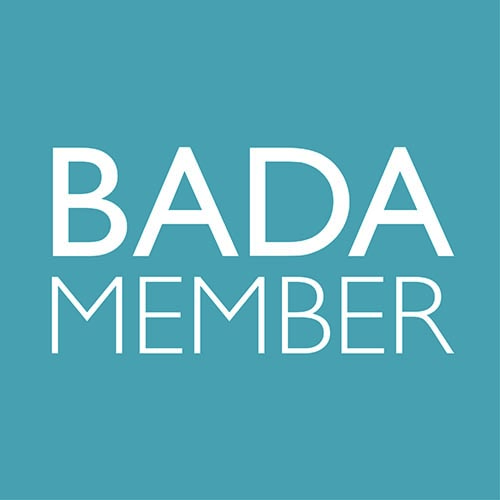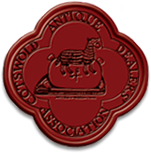18th Century Sandstone Statue of Greek Hero Hercules Wrestling Antaeus
18th Century Sandstone Statue of Greek Hero Hercules Wrestling Antaeus
Circa 1710
Stock Number: 13185/GSO
Height
186.00cm
[73.23 inches]
Width 62.00cm [24.41 inches]
Depth 68.00cm [26.77 inches]
Width 62.00cm [24.41 inches]
Depth 68.00cm [26.77 inches]
Sold
Attributed to Jan Peter van Baurscheit the Elder (1669 – 1728)
A fine large scale early 18th century sculpture depicting Hercules wrestling Antaeus. Hercules, as legend describes, gains his advantage by lifting the giant Antaeus clear of the ground. (Antaeus is invincible when in contact with the earth.) The strained composition is not fully in the round and possibly could have been for a niche or, as is sometimes the case, the artist was restricted by the size of the stone block.
The work is centered around Hercules’ death grip which can be seen in the compression of the rib cage, the stretched flesh around his crushing fingers, taught muscles and tortured features of Anteaus all combining to create a dramatic twisting scene of classic violence.
Small features to point out are the pointing toes searching desperately for contact with the ground and the large characterful lion's mask – an attribute of Hercules, which reminds me of a Roman tunic clasp.
For reference and favorable comparison in both subject and material (a fine carving stone known as Benthiem Sandstone), other works by the artist can be seen in the collection of the Rijksmuseum notably the statue of Hercules and Cacus.
A fine large scale early 18th century sculpture depicting Hercules wrestling Antaeus. Hercules, as legend describes, gains his advantage by lifting the giant Antaeus clear of the ground. (Antaeus is invincible when in contact with the earth.) The strained composition is not fully in the round and possibly could have been for a niche or, as is sometimes the case, the artist was restricted by the size of the stone block.
The work is centered around Hercules’ death grip which can be seen in the compression of the rib cage, the stretched flesh around his crushing fingers, taught muscles and tortured features of Anteaus all combining to create a dramatic twisting scene of classic violence.
Small features to point out are the pointing toes searching desperately for contact with the ground and the large characterful lion's mask – an attribute of Hercules, which reminds me of a Roman tunic clasp.
For reference and favorable comparison in both subject and material (a fine carving stone known as Benthiem Sandstone), other works by the artist can be seen in the collection of the Rijksmuseum notably the statue of Hercules and Cacus.




